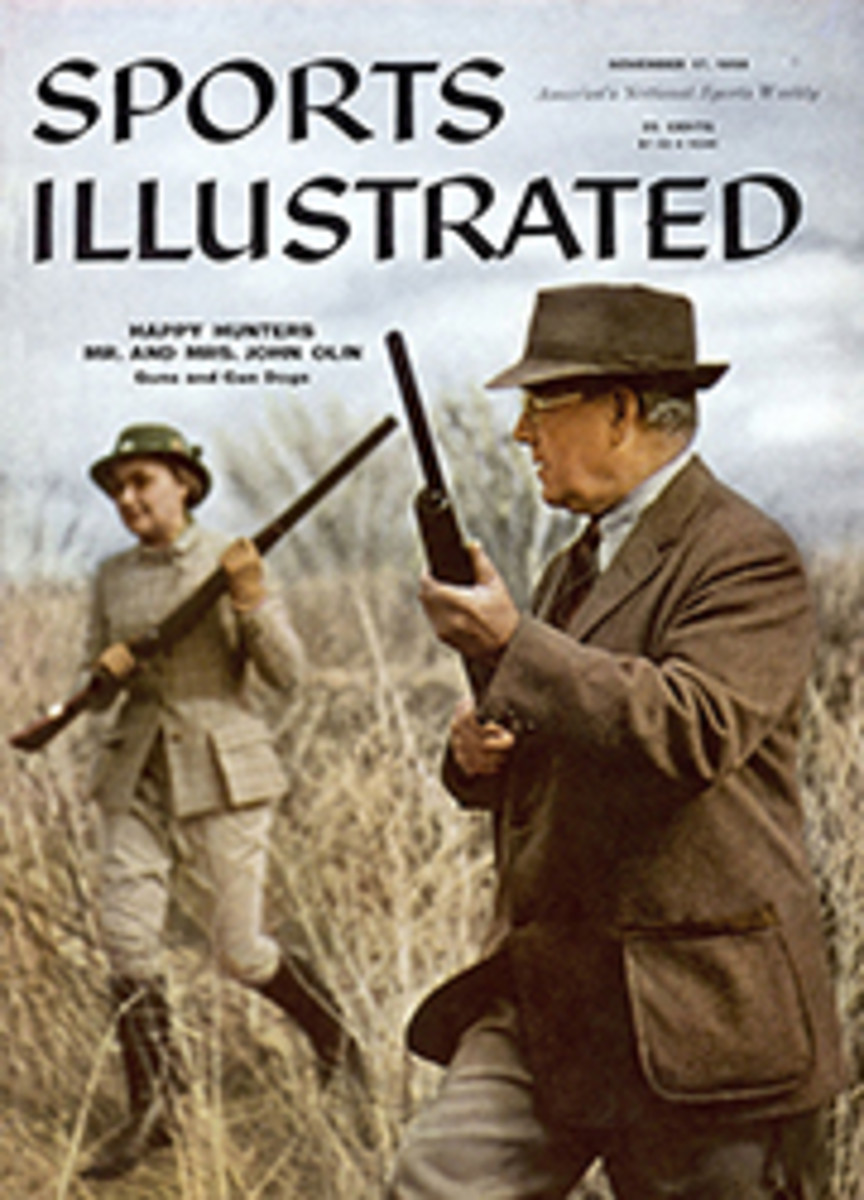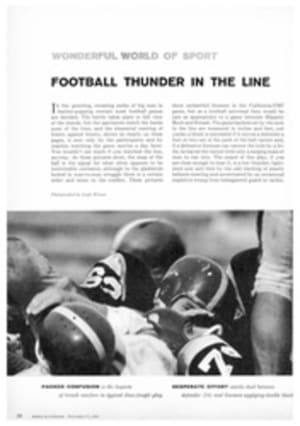
Playing buried and half-buried lies
The technique you use in a sand trap when you are faced with a buried or half-buried ball depends on whether the pin is positioned at the near or the far side of the green, whether you need to stop the ball quickly on the green or give it plenty of run.
On a short shot—that is, when the pin is on the near side, say 15 feet or so from the edge of the green—you play a sort of punch shot. You close the blade of the wedge and you aim to contact the sand about an inch behind the ball. When a ball is buried, there's usually a slight cup depression formed in the sand around the ball. You hit behind this cup. Now, on this shot there's no follow-through whatsoever. You drop the club on your spot behind the ball—and stop your swing right there. This abrupt stop has somewhat the same effect on the ball as the draw shot does in billiards. While it doesn't actually draw the ball back, there isn't going to be much overspin on the ball and it won't run too much on you and thus leave a long putt coming back.
On a long shot played from the same conditions, where the pin is on the far side of the green and there's 30 or 40 feet of green surface between you and the pin, you want some run on the ball. You set yourself up just as you would for the short shot and take similar aim an inch or so behind the ball, but this time you don't brake the club at impact with the sand. You follow through on this shot, and when the ball lands on the green there'll be sufficient roll on the ball to run it across the green and give you a good chance for a short putt.
WALTER BURKEMO, Franklin Hills CC, Franklin, Mich.
PHOTO
TWO ILLUSTRATIONS
Hit sand just back of cup formed by ball
NEXT WEEK: Shirley Spork on preventing excessive body motion

